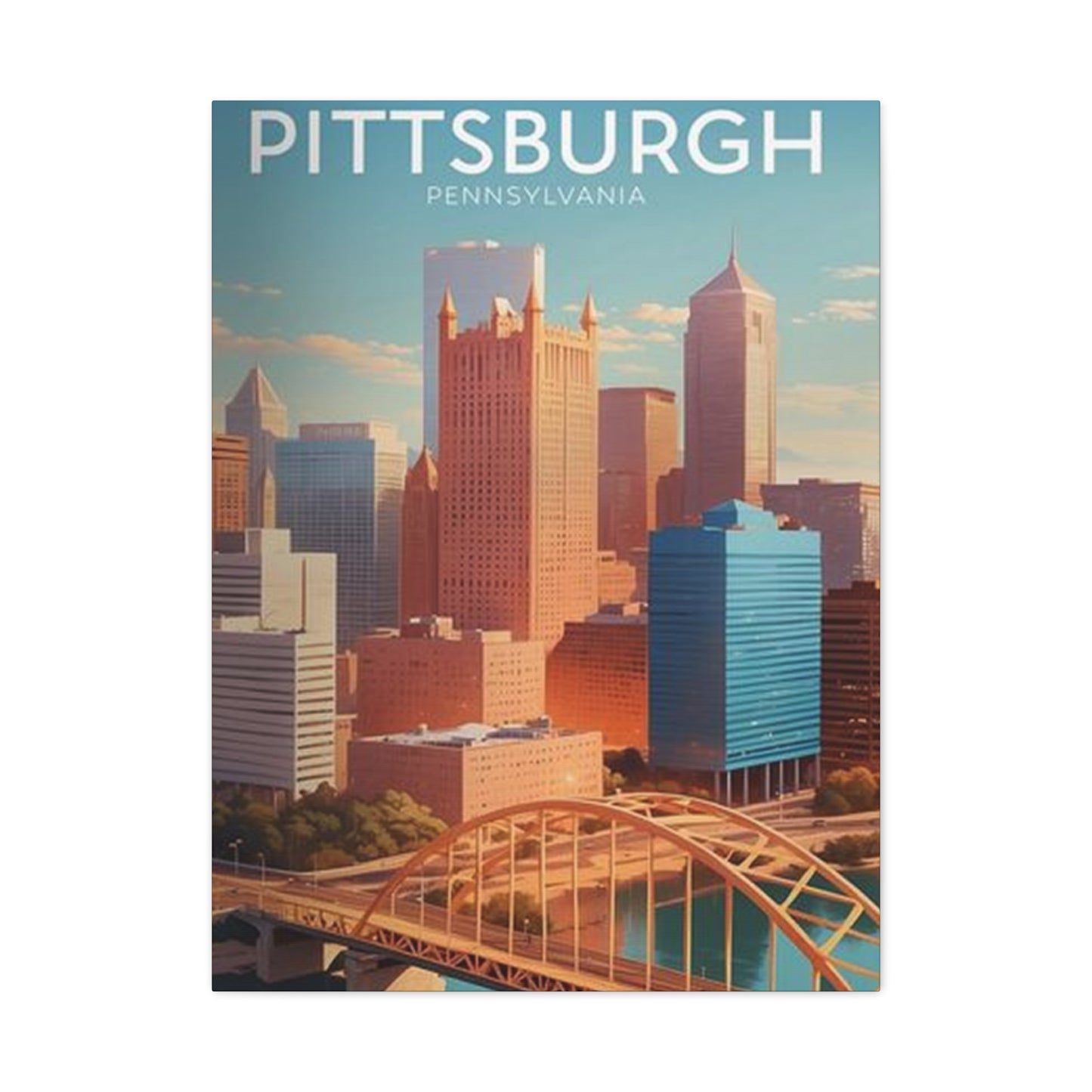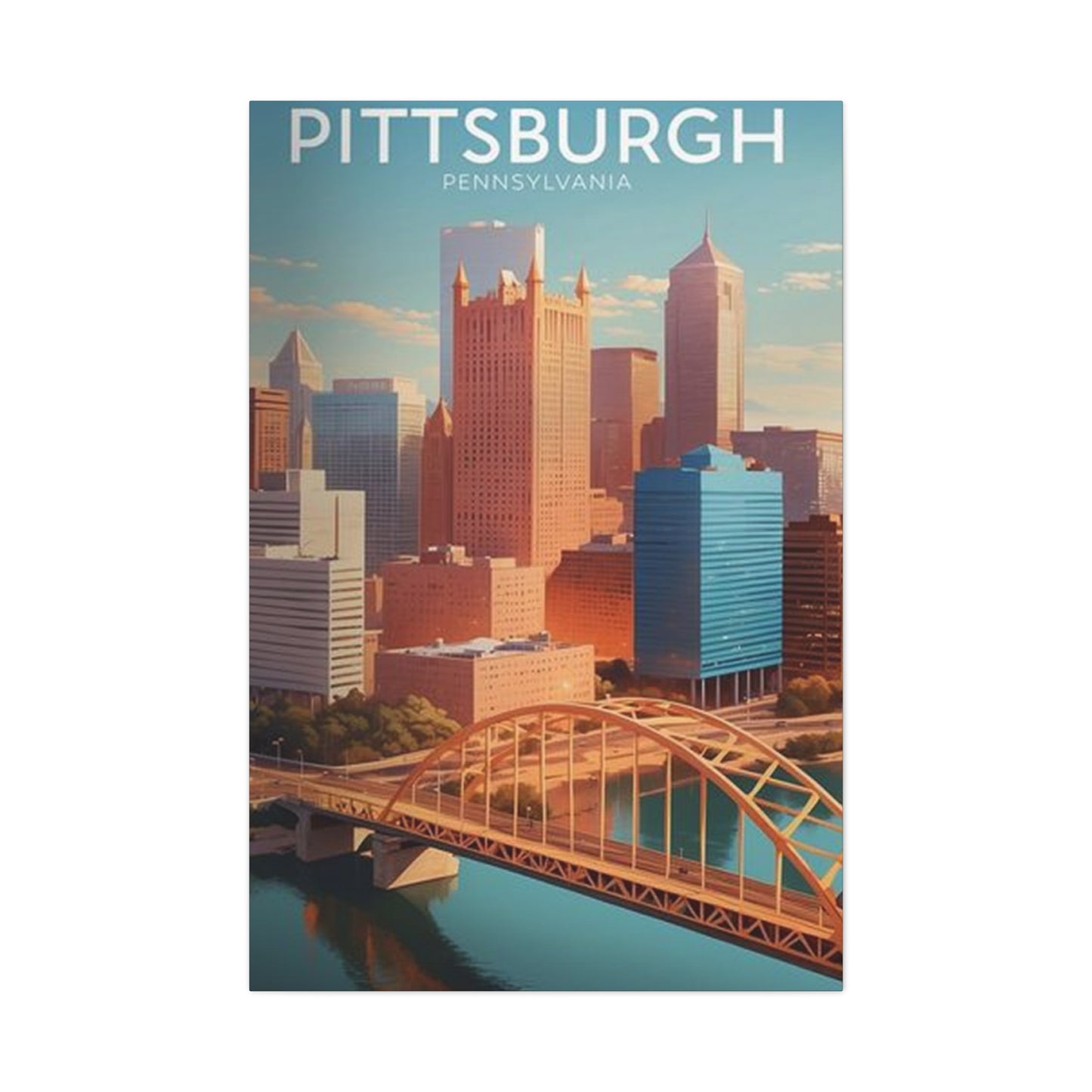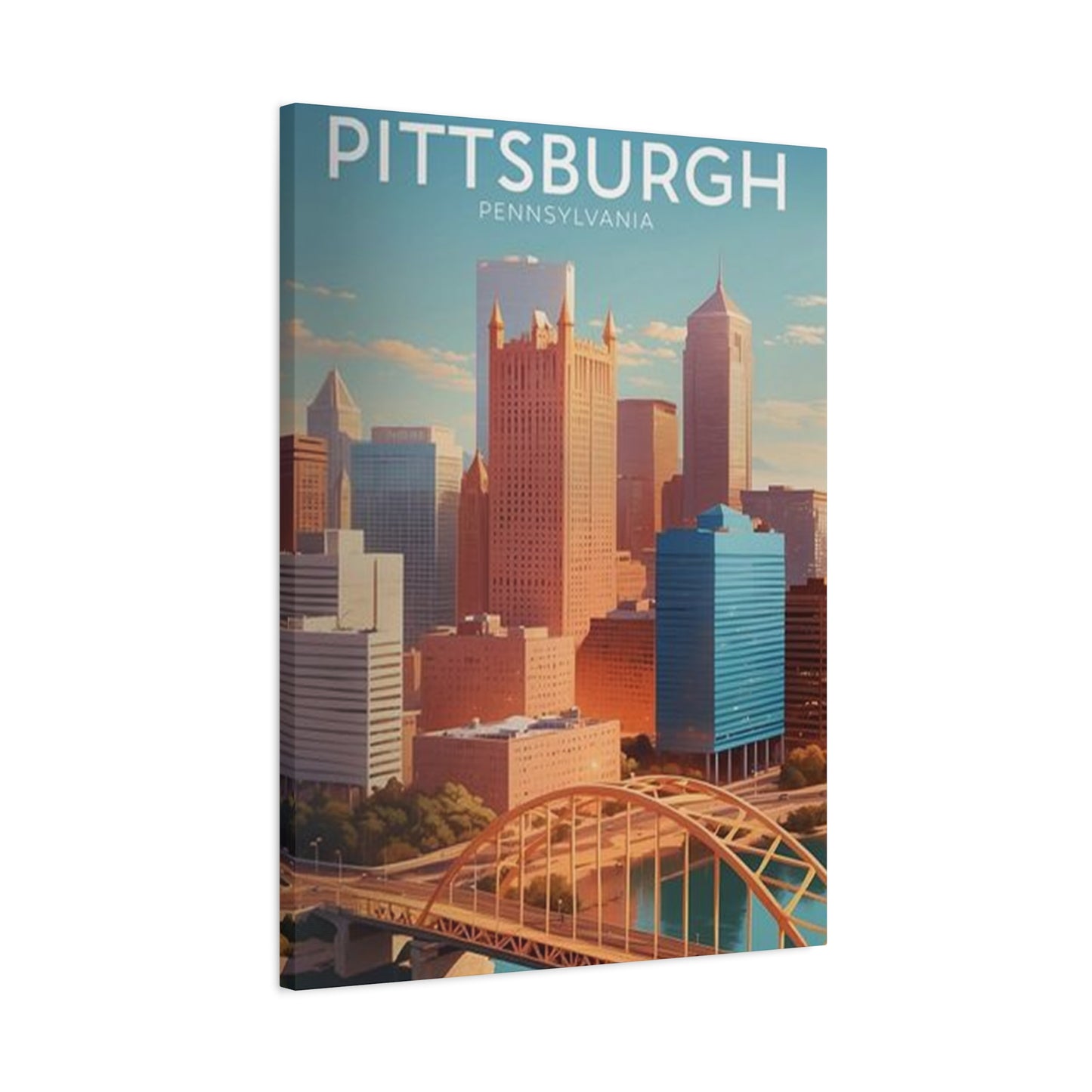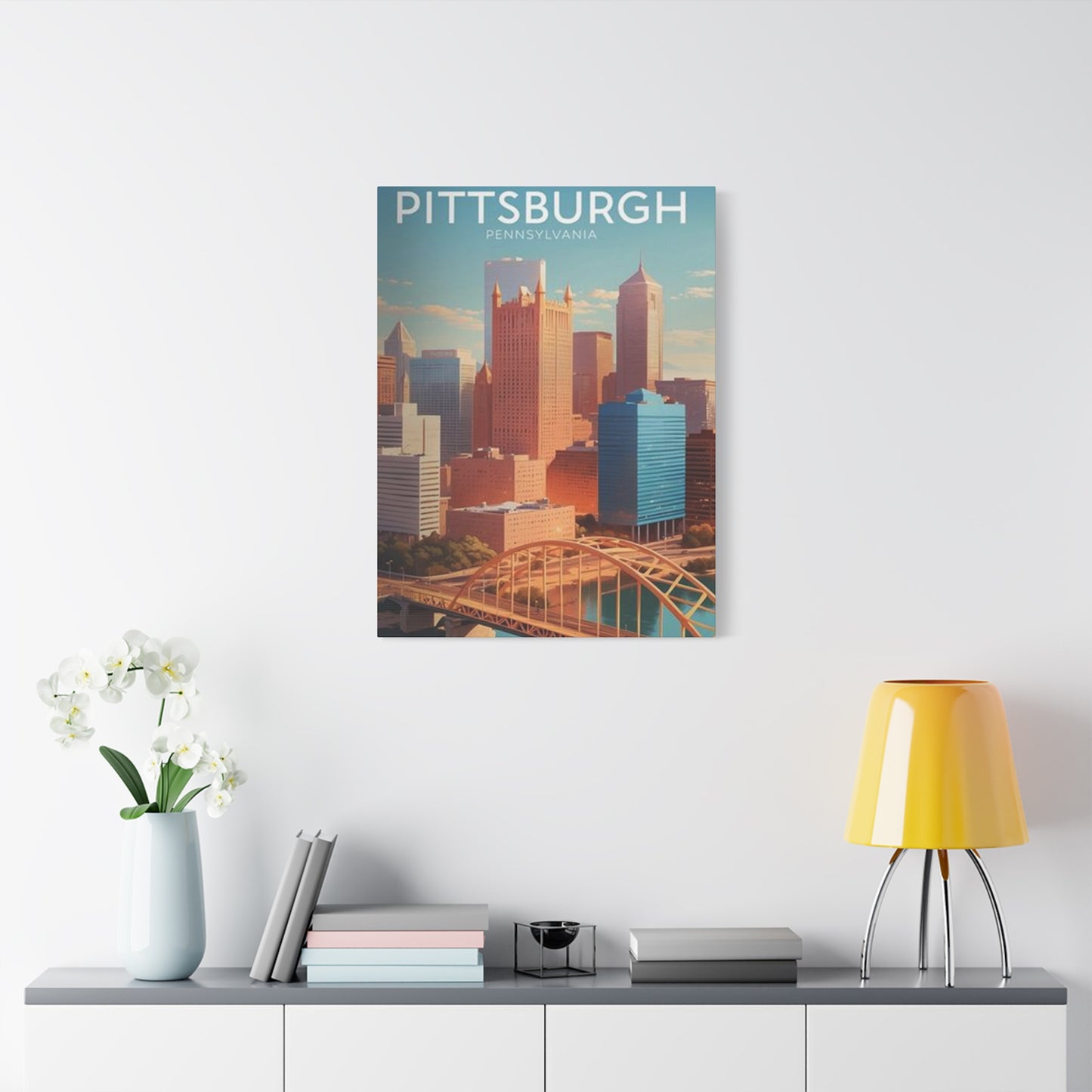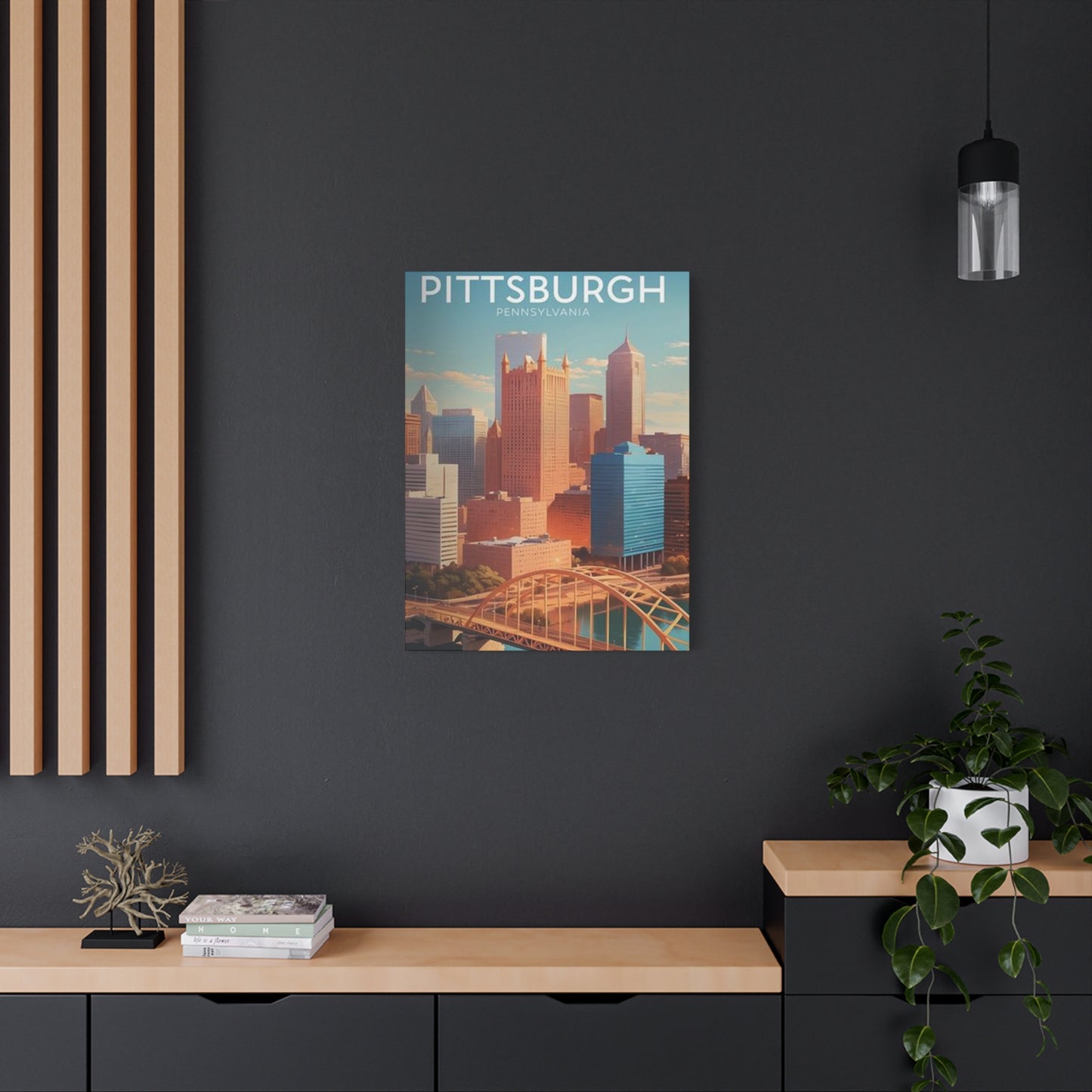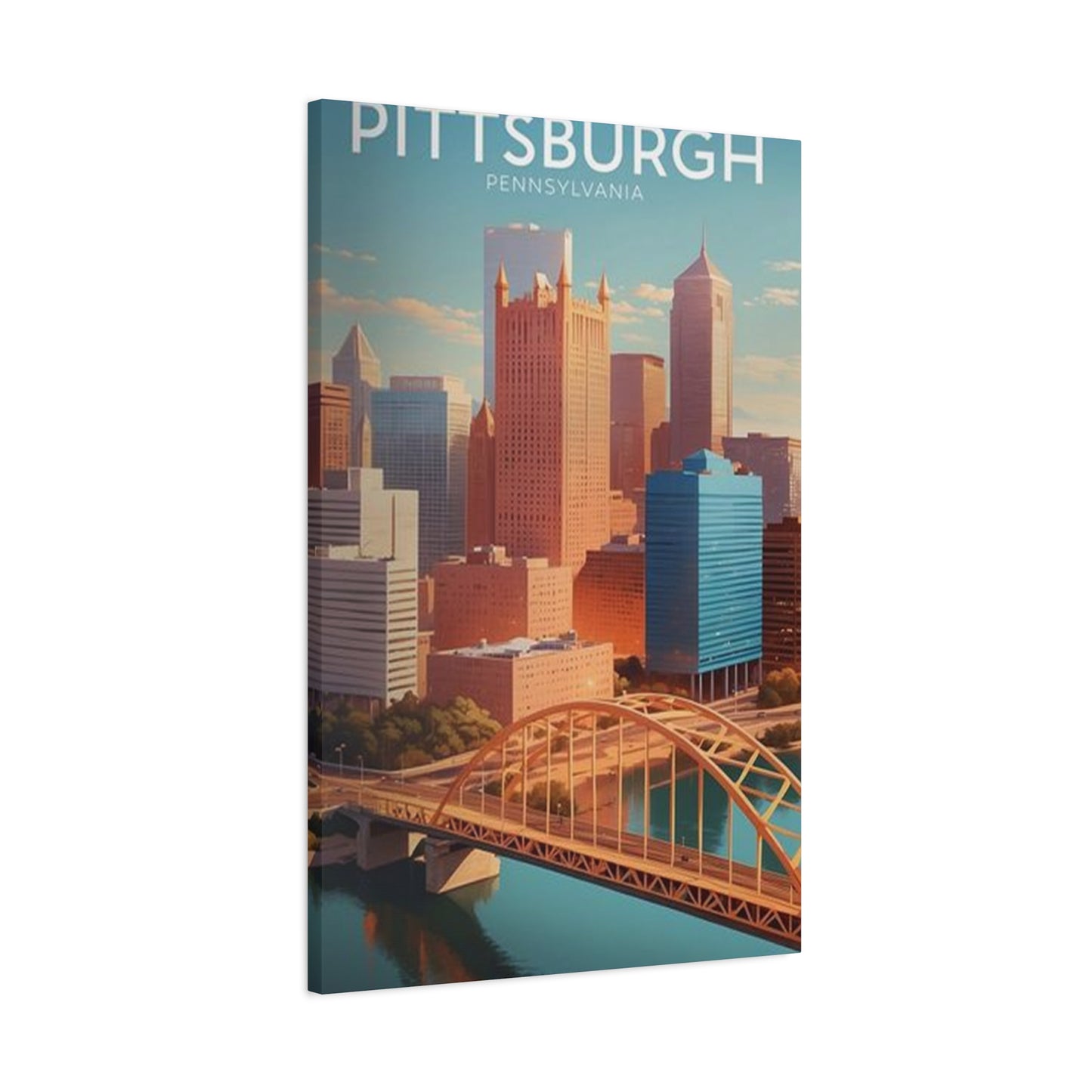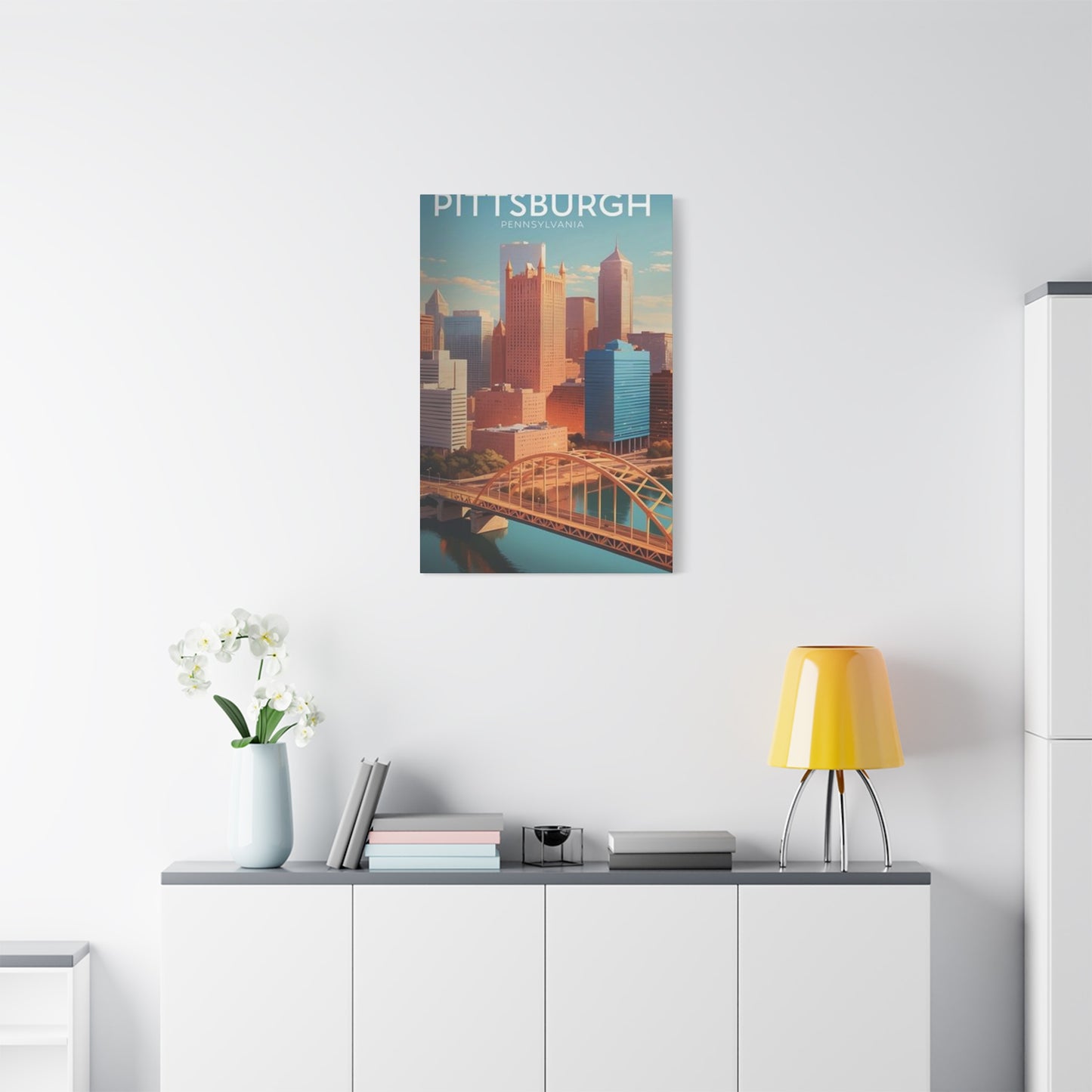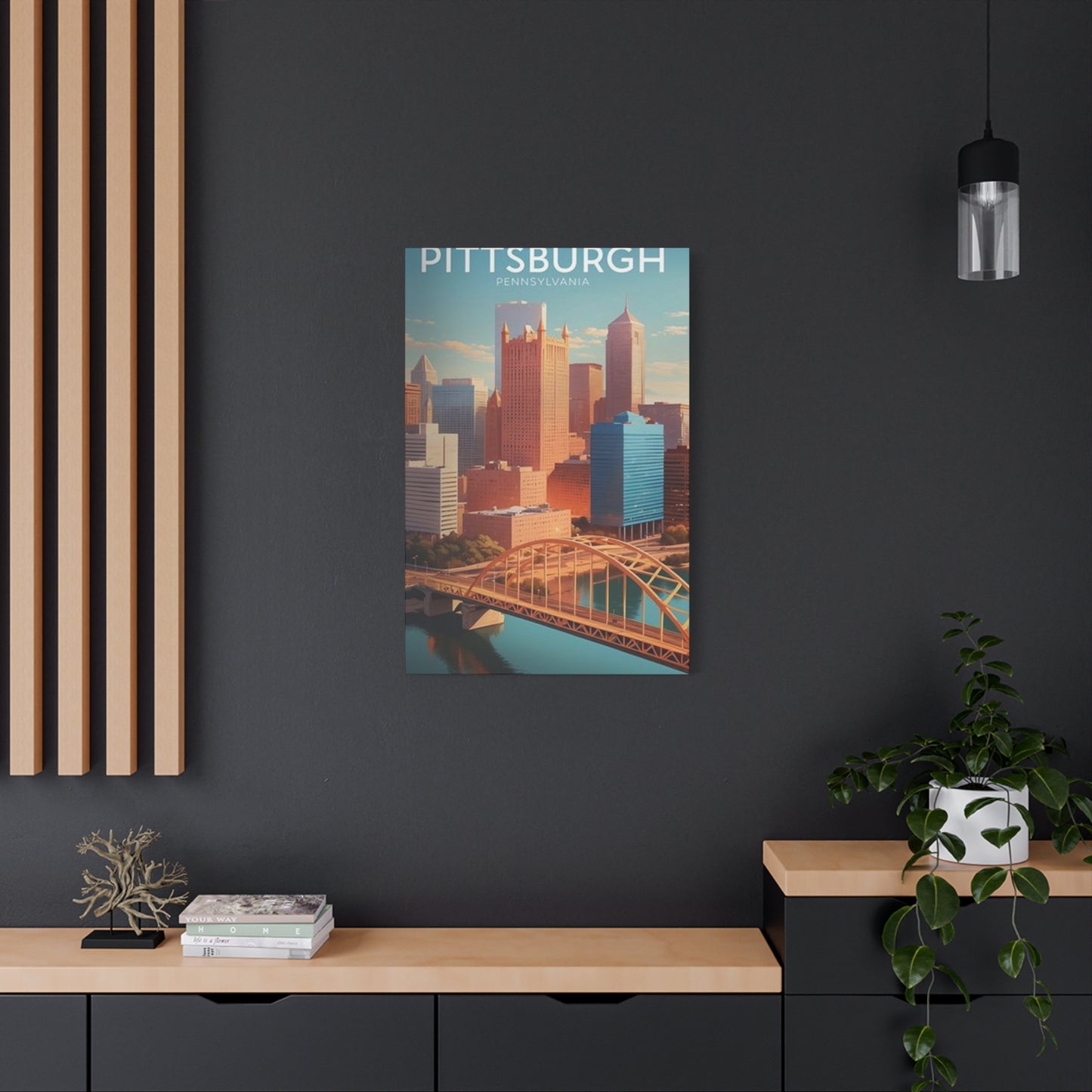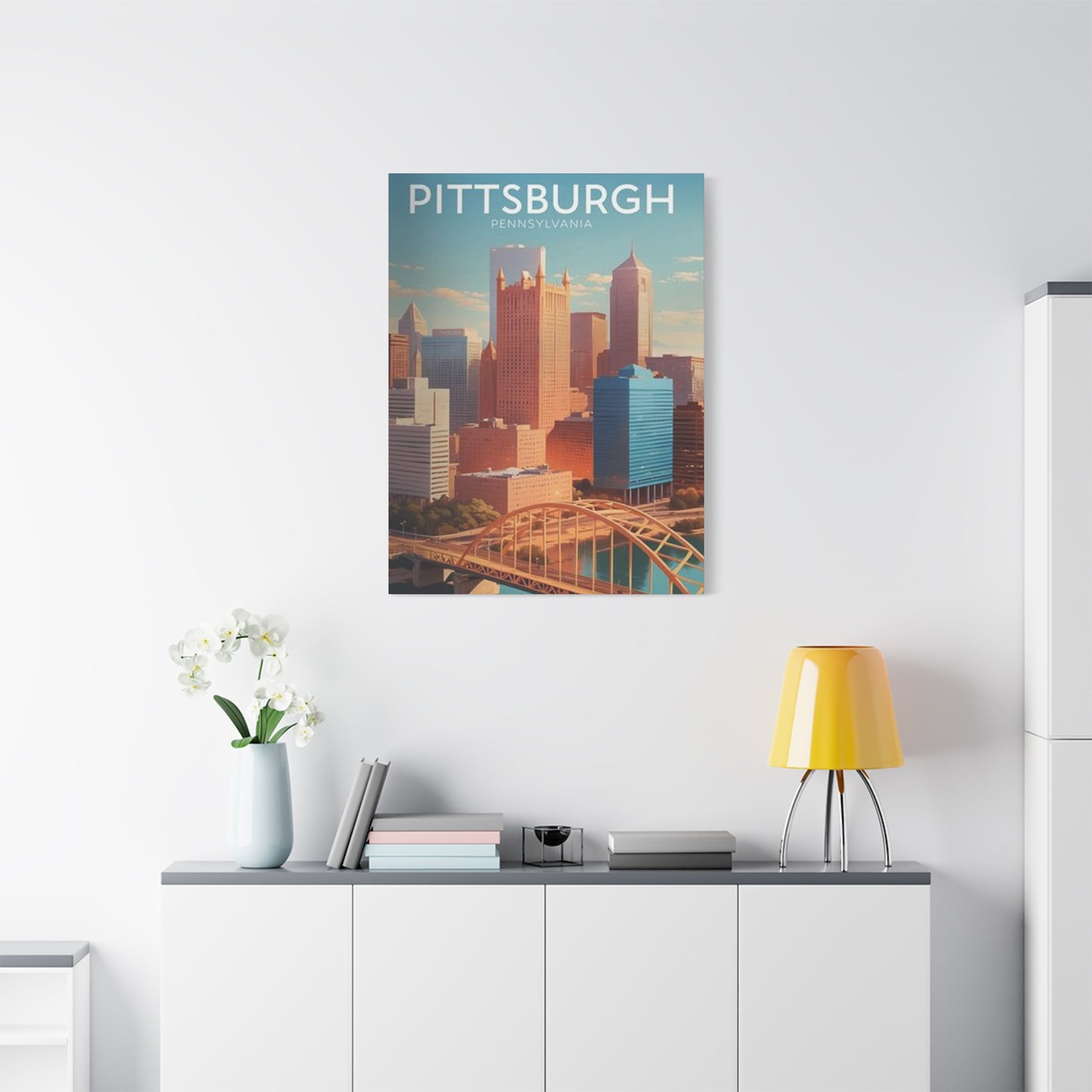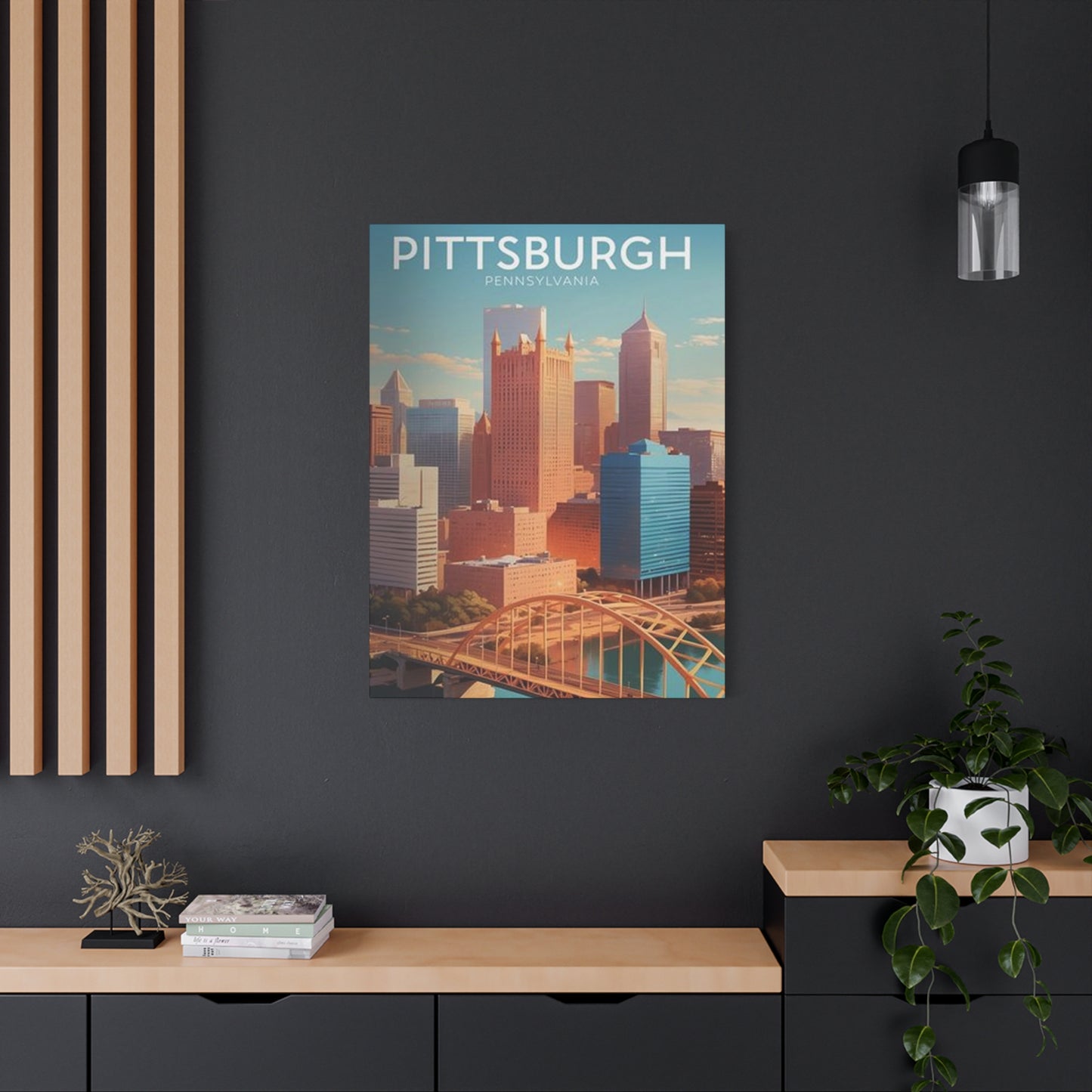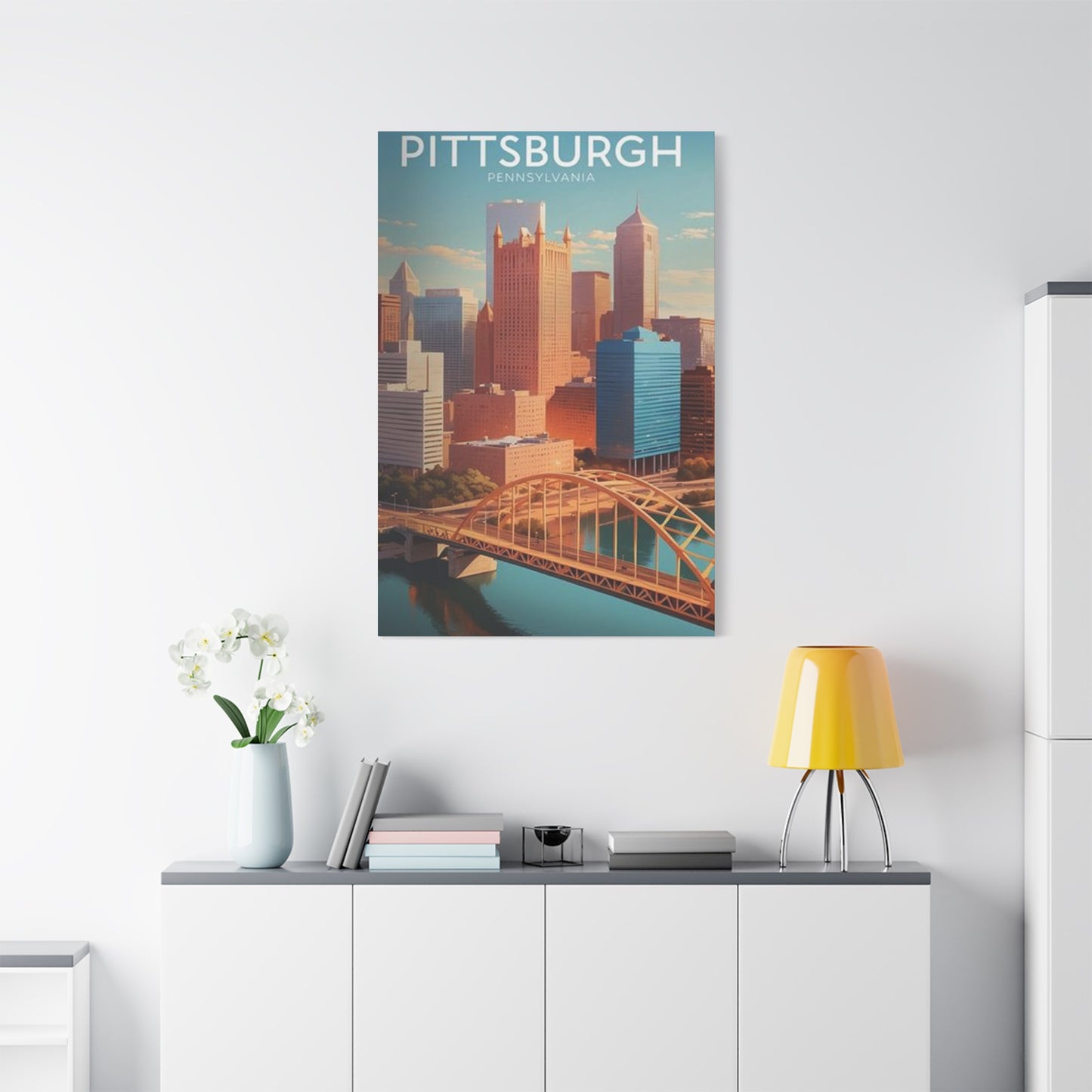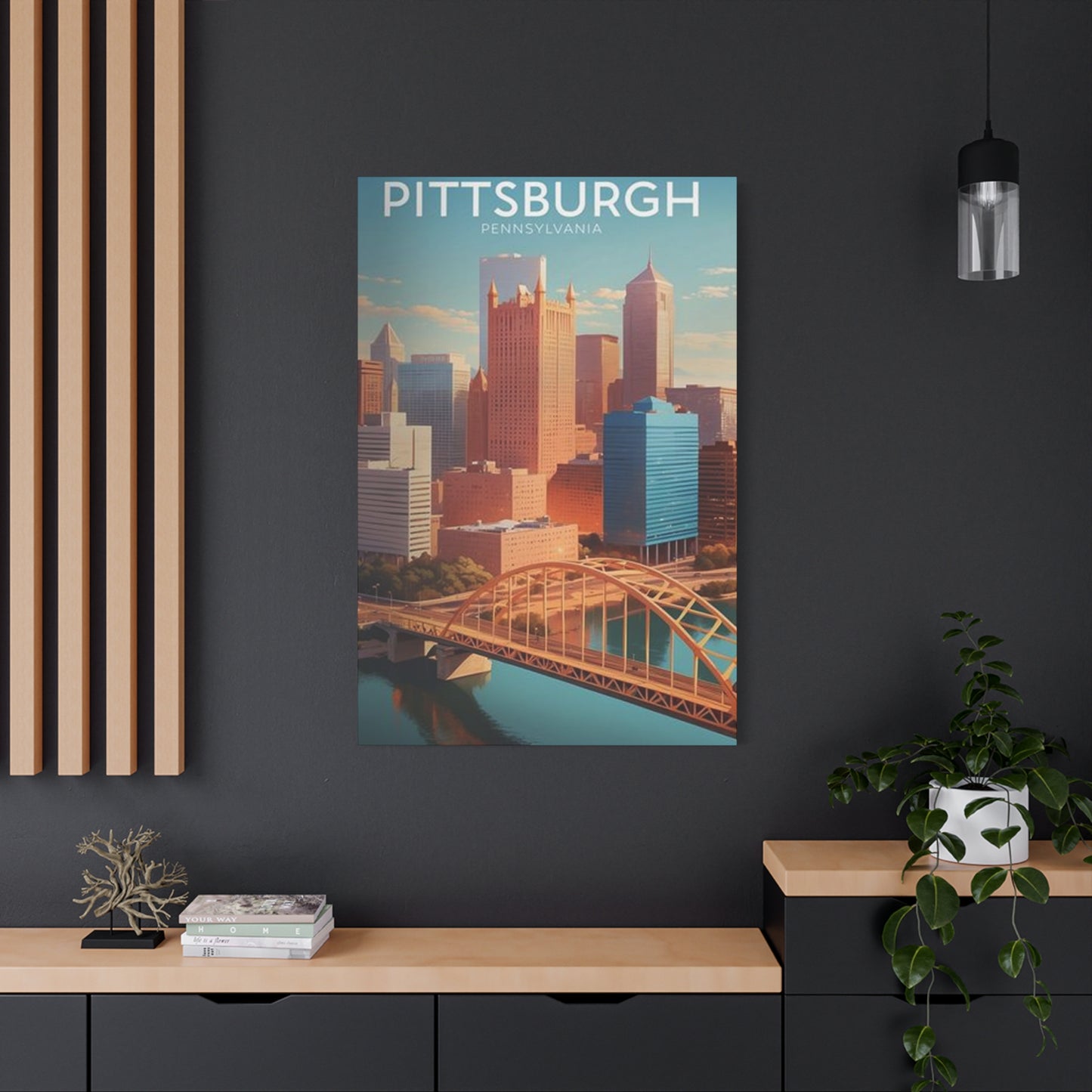A Complete Guide to Pittsburgh Skyline Posters Wall art and Urban Photography Decor
The architectural magnificence of Pittsburgh has captured the imagination of artists, photographers, and interior design enthusiasts for decades. This remarkable American city, nestled at the confluence of three rivers, presents one of the most photogenic urban landscapes in the United States. The transformation of Pittsburgh from an industrial powerhouse to a modern metropolitan area has created a visual narrative that translates beautifully into wall art and canvas prints. For those seeking to bring the essence of the Steel City into their living spaces, Pittsburgh skyline poster wall art and canvas prints offer an unparalleled opportunity to celebrate urban beauty while enhancing interior aesthetics.
The appeal of Pittsburgh skyline artwork extends far beyond simple decoration. These pieces serve as conversation starters, focal points for room design, and tributes to a city that has reinvented itself while maintaining its historic character. Whether you are a Pittsburgh native longing for a connection to home, a visitor who fell in love with the city's charm, or an interior design enthusiast drawn to urban photography, Pittsburgh skyline canvas prints provide versatile solutions for multiple decorating needs and personal preferences.
Understanding the Allure of Pittsburgh Skyline Photography
Pittsburgh presents photographers with an exceptional subject matter that combines natural geography with human-made structures. The city's unique topography, characterized by steep hills and river valleys, creates dramatic vantage points from which the skyline can be captured. The convergence of the Allegheny, Monongahela, and Ohio Rivers at Point State Park provides a natural focal point that has become synonymous with Pittsburgh's identity. This geographical feature creates reflection opportunities that photographers leverage to produce stunning images where the skyline mirrors itself in the water below.
The architectural diversity within Pittsburgh's skyline tells the story of American urban development across different eras. Historic buildings stand alongside modern skyscrapers, creating a visual timeline of architectural evolution. The USX Tower, formerly known as the U.S. Steel Tower, dominates the skyline with its distinctive steel construction, serving as a reminder of the city's industrial heritage. The PPG Place complex, with its neo-Gothic glass towers, adds a touch of European-inspired elegance to the cityscape. The BNY Mellon Center contributes sleek modern lines, while older structures provide historical context and visual interest.
Bridges play an integral role in Pittsburgh's visual identity, earning the city the nickname "City of Bridges." With more bridges than Venice, Pittsburgh offers photographers countless opportunities to incorporate these engineering marvels into skyline compositions. The iconic yellow of many Pittsburgh bridges adds a distinctive color element that sets this city's skyline apart from others. The Roberto Clemente Bridge, Andy Warhol Bridge, and Rachel Carson Bridge, collectively known as the Three Sisters, create symmetrical beauty when viewed from certain angles, particularly during evening hours when illuminated.
Seasonal variations dramatically alter the appearance of Pittsburgh's skyline, providing photographers with ever-changing conditions for capturing unique images. Autumn foliage surrounding the urban core creates warm color contrasts against steel and glass structures. Winter snowfall transforms the cityscape into a monochromatic study of light and shadow. Spring brings fresh greenery that softens the hard edges of buildings, while summer offers clear blue skies that provide perfect backdrops for architectural photography. These seasonal changes mean that Pittsburgh skyline canvas prints can vary significantly in mood and atmosphere depending on when the photograph was taken.
The Artistic Value of Urban Skyline Wall Art
Urban skyline photography represents a distinct genre within landscape photography that celebrates human achievement and architectural design. Unlike natural landscape photography that focuses on untouched wilderness, urban skyline art acknowledges the beauty humans can create through intentional design and construction. Pittsburgh skyline artwork specifically celebrates the transformation of industrial spaces into vibrant urban centers, reflecting broader themes of renewal, resilience, and adaptation. This artistic perspective elevates skyline photography beyond simple documentary images into thoughtful compositions that convey meaning and emotion.
The compositional elements within quality Pittsburgh skyline photographs demonstrate sophisticated understanding of visual principles. Photographers utilize leading lines created by rivers, bridges, and roadways to guide viewer attention toward focal points within the cityscape. The rule of thirds often places the horizon line strategically to balance sky and water elements with the built environment. Symmetry and reflection create harmonious compositions that please the eye and create visual stability. Foreground elements such as park features or riverbank vegetation provide depth and context that prevent skyline images from appearing flat or one-dimensional.
Color theory plays a crucial role in the aesthetic impact of Pittsburgh skyline canvas prints. The warm tones of sunset photography create feelings of comfort, nostalgia, and warmth that work well in living spaces designed for relaxation. Cool blue tones in twilight or nighttime photography convey sophistication, calm, and modern elegance suitable for professional environments or contemporary home designs. The yellow bridges of Pittsburgh introduce an accent color that can tie together various design elements within a room, serving as a connecting thread between artwork and other decorative choices.
Contrast between light and shadow in skyline photography creates visual drama that captures attention and maintains interest. The interplay between illuminated buildings and darker sky or water creates dynamic tension within the composition. Silhouetted buildings against colorful skies during sunset or sunrise create striking graphic quality that works particularly well in modern interior design contexts. High-contrast black and white interpretations of Pittsburgh's skyline offer timeless elegance that transcends trends and coordinates with virtually any color scheme.
Canvas Print Quality and Production Methods
The transformation of digital photography into physical canvas prints involves multiple technical processes that significantly impact the final product quality. Understanding these production methods helps consumers make informed decisions when selecting Pittsburgh skyline wall art. The journey from photograph to finished canvas print encompasses digital file preparation, printing technology, canvas material selection, stretching techniques, and finishing treatments that collectively determine the artwork's appearance, durability, and longevity.
Digital file resolution represents the foundation of quality canvas printing. High-resolution images contain more information per inch, allowing for larger print sizes without visible pixelation or quality degradation. Professional Pittsburgh skyline photography intended for canvas printing typically originates from high-megapixel cameras that capture extensive detail. The file preparation process includes color correction to ensure accurate reproduction, sharpening to compensate for the slight softening that occurs during printing, and resizing to match the desired finished dimensions while maintaining optimal resolution.
Printing technology dramatically affects the quality and longevity of canvas prints. Giclée printing, considered the gold standard for fine art reproduction, utilizes archival pigment-based inks and high-resolution inkjet printers to create museum-quality reproductions. These pigment inks resist fading far better than dye-based alternatives, with properly displayed giclée prints remaining vibrant for decades without significant color shift. The term giclée derives from French meaning to spray or squirt, accurately describing the printing process where microscopic ink droplets are precisely placed to create continuous-tone images with exceptional detail and color accuracy.
Canvas material selection influences both the appearance and durability of finished prints. Cotton canvas offers a traditional fine art feel with a slightly irregular weave that creates authentic artistic texture. Polyester canvas provides a more uniform surface with excellent color vibrancy and resistance to environmental factors like humidity. Blended canvas materials attempt to combine the aesthetic qualities of cotton with the practical advantages of synthetic fibers. The weight of canvas fabric, measured in ounces per square yard, indicates thickness and durability, with heavier canvases generally providing more substantial finished products less prone to sagging or damage.
The stretching process transforms flat printed canvas into three-dimensional wall art ready for display. Gallery wrap stretching extends the image around the edges of the wooden frame, eliminating the need for additional framing and creating a contemporary finished appearance. Museum wrap stretching uses neutral-colored or continuation patterns on the sides, preserving the entire image on the front face for traditional presentation. The depth of the stretcher bars, typically ranging from three-quarters of an inch to two inches, affects the dimensional presence of the artwork, with deeper stretchers creating more dramatic shadow lines and greater visual impact.
Selecting the Perfect Pittsburgh Skyline Canvas Print
Choosing the ideal Pittsburgh skyline canvas print involves considering multiple factors that affect how the artwork will function within your specific space and meet your personal preferences. The selection process should account for room dimensions, existing decor, intended atmosphere, viewing distance, and personal connection to the subject matter. A methodical approach to selection increases the likelihood of choosing artwork that provides long-term satisfaction and successfully achieves your decorating goals.
The perspective and composition of the skyline image significantly impact its suitability for different spaces and purposes. Panoramic compositions showing the full breadth of Pittsburgh's downtown work beautifully as statement pieces in living rooms, conference rooms, or lobby areas where they can be viewed from a distance. These wide-format prints create dramatic impact and provide comprehensive views that showcase the city's entire character. Vertical compositions focusing on specific building clusters or architectural details suit narrower wall spaces such as hallways, between windows, or in dining areas where horizontal space is limited.
Image mood and color palette should harmonize with the existing decor and intended atmosphere of the space. Warm sunset or sunrise images with golden, orange, and pink tones create inviting, comfortable environments suitable for residential living spaces, hospitality venues, or anywhere a welcoming atmosphere is desired. Cool blue twilight or nighttime images convey sophistication and modernity appropriate for professional offices, contemporary homes, or urban-themed spaces. Black and white interpretations offer timeless versatility that coordinates with virtually any color scheme while adding artistic refinement and classic elegance.
The level of detail and visual complexity in the chosen image affects viewer engagement and display effectiveness at various viewing distances. Highly detailed images with numerous architectural elements, visible bridge structures, and intricate reflections reward close inspection and work well in spaces where viewers can approach and examine the artwork. Simpler compositions with bold shapes and clear focal points remain effective when viewed from greater distances, making them suitable for large rooms, lobbies, or areas where the artwork serves as background rather than primary focus.
Seasonal representation in Pittsburgh skyline photography connects the artwork to specific times of year and associated emotional responses. Autumn images with colorful foliage create warmth and richness particularly appealing in traditional or rustic design contexts. Winter scenes with snow-covered buildings and bridges evoke peaceful tranquility and clean simplicity that complements minimalist or Scandinavian-inspired interiors. Spring and summer representations with green vegetation and blue skies convey vitality and optimism suitable for energizing spaces like offices, fitness facilities, or creative studios.
Personal connection to Pittsburgh influences which skyline views resonate most strongly with individual buyers. Those with memories of specific locations may prefer images taken from viewpoints they have visited, such as Mount Washington, Point State Park, or the North Shore. Residents of particular Pittsburgh neighborhoods might choose skyline views that include their area of the city. Former residents or visitors may select images that captured the city during the season or time when they experienced it. These personal connections transform decorative artwork into meaningful mementos that trigger positive memories and emotional responses.
Photography Techniques for Capturing Urban Skylines
The technical and creative processes involved in capturing compelling Pittsburgh skyline photography reveal the skill and planning required to produce images worthy of canvas print reproduction. Understanding these techniques enhances appreciation for quality skyline artwork while helping consumers recognize superior photography that justifies premium pricing. The combination of technical expertise, creative vision, and sometimes considerable patience distinguishes exceptional skyline photography from casual snapshots.
Camera equipment selection significantly impacts the technical quality and creative possibilities of skyline photography. Full-frame digital cameras with high-resolution sensors capture extensive detail and perform well in challenging lighting conditions common during optimal skyline photography times. Wide-angle lenses allow photographers to capture expansive cityscape views while emphasizing depth and perspective. Telephoto lenses enable compressed compositions that stack buildings dramatically or isolate specific architectural groups. Tripods provide essential stability for long exposures required during low-light conditions, preventing camera shake that would degrade sharpness.
Exposure settings balance the photographer's creative vision with technical requirements for proper image capture. Aperture selection affects depth of field, with smaller apertures creating sharp focus throughout the frame from foreground to distant buildings. Shutter speed determines how motion is rendered, with faster speeds freezing water movement while slower speeds create smooth, ethereal water surfaces. ISO sensitivity allows adjustment for lighting conditions but must be balanced against increasing digital noise at higher settings. Professional photographers often bracket exposures, capturing multiple versions at different settings to ensure optimal results or enable high dynamic range processing.
Dynamic range challenges arise when photographing skylines that include both bright skies and darker urban elements. The contrast between illuminated buildings and surrounding sky, or between lit and shadowed areas within the cityscape, can exceed what camera sensors can capture in a single exposure. Graduated neutral density filters help balance exposure by darkening the sky while allowing proper exposure for the darker urban elements. High dynamic range techniques combining multiple exposures at different brightness levels create images with detail retained throughout the entire tonal range, from deepest shadows to brightest highlights.
Composition techniques transform technically adequate photographs into compelling visual artwork. The rule of thirds places important elements such as the horizon or prominent buildings at positions one-third into the frame rather than centered, creating more dynamic and interesting compositions. Leading lines formed by rivers, bridges, roads, or shorelines guide viewer attention through the image toward focal points. Foreground elements such as riverbank features, park elements, or architectural details add depth and three-dimensional quality that prevents skyline images from appearing flat. Reflections in water double the visual interest and create satisfying symmetry.
Room-Specific Applications for Pittsburgh Skyline Art
Different rooms within residential and commercial spaces present unique opportunities and challenges for displaying Pittsburgh skyline canvas prints. Understanding room-specific considerations helps optimize artwork selection and placement for maximum aesthetic impact and functional appropriateness. Each space has distinct purposes, traffic patterns, and design requirements that influence how skyline artwork should be chosen and displayed.
Living rooms serve as primary gathering spaces where Pittsburgh skyline canvas prints can function as statement pieces that set the tone for the entire home. Large-scale panoramic prints above sofas or fireplaces create commanding focal points that anchor seating arrangements and provide conversation starters. The color palette and mood of living room skyline artwork should complement the desired atmosphere, with warm tones supporting cozy, inviting environments and cool tones creating more formal, sophisticated spaces. Living rooms typically allow for bold artistic choices since they represent the homeowner's personal taste and welcome creative expression.
Bedroom applications for Pittsburgh skyline artwork require consideration of the restful, personal nature of these private spaces. Calming twilight or nighttime skyline images with deep blues and gentle lighting create peaceful atmospheres conducive to relaxation and sleep. Artwork placed above beds should be securely mounted given the safety implications of objects positioned over sleeping areas. Pittsburgh natives or those with meaningful connections to the city may find skyline artwork in bedrooms creates comforting associations with home and place. The personal nature of bedrooms allows for highly sentimental artwork choices that reflect individual rather than general tastes.
Dining room walls provide excellent opportunities for Pittsburgh skyline canvas prints that enhance the dining experience without interfering with food presentation. Sophisticated twilight skyline images with elegant lighting complement formal dining atmospheres. Artwork should be positioned to be visible from dining positions without requiring uncomfortable head turning or positioning. The scale should be sufficient to register from seated positions around the table but not so large as to overwhelm the space or compete visually with table settings, food, and floral arrangements. Dining rooms bridge public and private space, suggesting moderately formal artwork choices.
Framing Options and Presentation Styles
The presentation method for Pittsburgh skyline canvas prints significantly affects their appearance, style appropriateness, and integration with interior design. Various framing and finishing options accommodate different aesthetic preferences, architectural styles, and display contexts. Understanding available presentation methods helps buyers select options that best serve their specific situations and design goals.
Gallery wrap presentation represents the most popular contemporary approach for canvas prints, extending the image around the edges of the stretcher frame to create finished appearance without additional framing. This frameless presentation emphasizes the artwork itself rather than surrounding it with decorative borders. Gallery wraps work exceptionally well with modern and contemporary interiors where clean lines and minimal ornamentation dominate. The three-dimensional quality of gallery-wrapped canvas, projecting from the wall with visible depth, creates subtle shadow lines that add visual interest and architectural quality to the artwork.
Museum wrap technique differs from gallery wrap by preserving the entire image on the front face while using neutral color or image continuation on the sides. This approach suits images where the full composition must remain visible from the front, particularly when the photographer has used edge-to-edge composition without accommodation for wrapping. Museum wraps often incorporate additional framing since the neutral sides may not provide finished appearance on their own. This traditional presentation method suits classical interiors or institutional settings where convention and formality are expected.
Floating frames create the illusion that canvas prints hover within frame structures, with space visible between the canvas edge and the frame interior. This presentation style combines the clean, contemporary feel of gallery wraps with the polished finished appearance that frames provide. Floating frames work beautifully in transitional interiors that blend traditional and contemporary elements, satisfying preferences for both frame finish and modern presentation. The dimensional depth created by floating presentation adds architectural interest and premium quality perception.
Custom framing allows precise specification of all presentation details to achieve exact desired results. Professional framers can accommodate unusual sizes, specific color requirements, specialized glazing needs, or unique presentation challenges. While custom framing costs more than standard options, the ability to perfectly match existing decor, architectural details, or specific aesthetic visions often justifies the investment. Custom framing particularly benefits high-value artwork or situations where standard options do not adequately serve the display context.
Ready-made frame options provide cost-effective presentation solutions for standard canvas sizes. Many canvas print retailers offer frames specifically designed to coordinate with their products, ensuring proper fit and compatible aesthetics. These pre-designed options simplify the selection process while controlling costs. Ready-made frames work well for straightforward presentation needs where extensive customization is unnecessary. The limitation lies in available sizes, styles, and colors, which may not accommodate every situation or preference.
Pittsburgh Architecture Featured in Skyline Photography
The individual buildings and architectural landmarks that comprise Pittsburgh's skyline each contribute unique characteristics that affect the overall visual composition of skyline photography. Understanding these structures and their architectural significance enriches appreciation for skyline canvas prints while providing context for the city's development and design evolution. The architectural diversity within Pittsburgh's downtown creates layered visual interest that rewards close examination.
The USX Tower, officially known as the U.S. Steel Tower, dominates Pittsburgh's skyline as the city's tallest building at sixty-four stories. Completed in 1970, this modernist structure features exposed weathering steel cladding that reflects the city's steel heritage while showcasing innovative architectural design. The building's distinctive triangular footprint creates varying silhouettes depending on viewing angle, making it visually dynamic in skyline photography. The exposed steel exterior, designed to develop protective rust patina rather than requiring paint, represents architectural philosophy celebrating industrial materials and honest structural expression. This iconic tower frequently serves as the recognizable focal point in Pittsburgh skyline compositions.
PPG Place stands as one of Pittsburgh's most architecturally distinctive complexes, consisting of six buildings dominated by a forty-story tower. Completed in 1984, the neo-Gothic glass design by Philip Johnson and John Burgee creates sparkling, crystalline presence in the skyline. The buildings feature more than nineteen thousand pieces of glass creating reflective surfaces that change appearance dramatically with lighting conditions and weather. The Gothic revival detailing, including pointed arches and spires, creates unexpected romantic character within an otherwise modern cityscape. PPG Place frequently adds elegant vertical emphasis and reflective quality to skyline photography, particularly striking when captured during blue hour or at night when internal lighting illuminates the glass structures.
The BNY Mellon Center, formerly known as the Mellon Bank Center, contributes fifty-four stories of sleek modernist design to Pittsburgh's skyline. Completed in 1983, this structure features clean lines and reflective glass curtain wall construction typical of late twentieth-century corporate architecture. The building's form creates strong vertical emphasis that complements other skyline elements while adding substantial mass to the overall composition. The reflective facade captures and mirrors sky colors and clouds, creating dynamic visual effects that change throughout the day. This building often appears in skyline photography as a supporting element that reinforces the modern, corporate character of Pittsburgh's contemporary identity.
The Gulf Tower, constructed in 1932, represents Art Deco architectural elegance from Pittsburgh's golden age of skyscraper construction. The building's distinctive stepped pyramid roof, originally adorned with a beacon that served as a weather indicator, creates memorable skyline profile particularly visible in closer skyline views or from elevated vantage points. The Art Deco detailing including geometric patterns and ornamental elements represents architectural optimism despite being completed during the Great Depression. This historic structure connects Pittsburgh's contemporary skyline to earlier architectural periods, providing visual continuity across different development eras. Skyline photography capturing the Gulf Tower emphasizes historical depth and architectural diversity.
The Cathedral of Learning at the University of Pittsburgh, while not technically part of the downtown business district, often appears in wider skyline compositions due to its distinctive forty-two story Gothic Revival tower. Completed in 1937, this academic building stands as one of the tallest educational buildings in the Western Hemisphere and the second-tallest university building in the world. The Gothic architecture creates strong vertical lines and romantic silhouette that contrasts with the more rectilinear forms of modern office towers. The Cathedral of Learning frequently adds cultural and educational dimensions to skyline photography, reminding viewers that Pittsburgh's identity extends beyond commerce to encompass significant educational institutions.
Pittsburgh's iconic yellow bridges, while not buildings, function as essential architectural elements within skyline compositions. The Roberto Clemente Bridge, Andy Warhol Bridge, and Rachel Carson Bridge, collectively known as the Three Sisters, create distinctive parallel lines and repeated forms that photographers leverage for compositional rhythm. These identical self-anchored suspension bridges painted in distinctive Aztec gold color create visual continuity while their arched forms soften the rigid vertical and horizontal lines of buildings. The bridges connect the downtown skyline physically and visually to the North Shore, creating foreground interest and framing opportunities that enhance photographic compositions. Evening illumination of these structures adds dramatic lighting elements to nighttime skyline photography.
Point State Park, located at the confluence of Pittsburgh's three rivers, provides crucial foreground and contextual element in many skyline compositions. The park's iconic fountain, shooting water up to one hundred fifty feet into the air, creates dynamic focal point that connects natural water features with urban development. The preserved Fort Pitt Blockhouse and historical markers within the park anchor Pittsburgh's contemporary skyline to its frontier origins. The park's open green space creates breathing room in dense urban development while providing elevated viewing platforms and shoreline access that photographers utilize for optimal shooting positions. Skyline photography incorporating Point State Park elements adds historical context and geographical specificity that distinguishes Pittsburgh from other American cities.
Seasonal Variations in Pittsburgh Skyline Photography
The dramatic seasonal changes experienced in Pittsburgh create substantially different photographic opportunities throughout the year, affecting color palettes, atmospheric conditions, and overall mood of skyline imagery. Understanding seasonal characteristics helps consumers select Pittsburgh skyline canvas prints that resonate with their experiences of the city or create desired emotional responses. Seasonal diversity also provides opportunities for collecting multiple prints that can be rotated throughout the year.
Spring skyline photography captures Pittsburgh's emergence from winter with fresh greening vegetation softening the urban landscape. Trees throughout the city and along riverbanks develop new foliage that introduces vibrant green tones contrasting with steel and glass architecture. Spring weather brings variable conditions including dramatic cloud formations, clear blue skies following rain systems, and occasional late-season snow creating unexpected visual combinations. The angle of spring sunlight, higher in the sky than winter but not as intense as summer, creates balanced lighting that defines architectural details without harsh shadows. Spring skyline images convey renewal, growth, and optimism, making them appropriate for spaces emphasizing new beginnings or fresh perspectives.
Summer skyline photography benefits from lush full foliage that maximizes greenery throughout compositions, creating strong contrast between natural and built environments. Long daylight hours provide extended opportunities for golden hour photography at both sunrise and sunset, with the sun positioned to create dramatic side lighting on buildings. Summer weather generally offers more consistent clear conditions than transitional seasons, though heat and humidity can create haze that softens distant elements and reduces contrast. The bright blue skies typical of summer days provide classic backdrops for architectural photography. Summer skyline images convey energy, vitality, and fullness appropriate for active spaces or environments emphasizing growth and prosperity.
Autumn transforms Pittsburgh's skyline photography with spectacular foliage colors ranging from bright yellows and oranges to deep reds and burgundy tones. The trees covering Pittsburgh's hills create colorful frames and foreground elements that enhance skyline compositions with warm natural tones. Clear, crisp autumn air often provides exceptional visibility and color saturation that creates vivid, sharp images. Lower sun angles create longer shadows and more dramatic dimensional quality in buildings. The combination of urban architecture with autumn foliage creates distinctly American imagery celebrating seasonal change. Autumn skyline prints work beautifully in spaces featuring warm color palettes, natural materials, or traditional design aesthetics.
Winter skyline photography presents Pittsburgh in stark, dramatic simplicity with snow-covered buildings and bare tree branches creating graphic compositions. Overcast winter skies create soft, even lighting that eliminates harsh shadows while emphasizing subtle tonal variations. Fresh snow covering buildings, bridges, and surrounding landscape creates high-contrast monochromatic scenes that translate beautifully to black and white photography. Ice formations on rivers and frozen waterfalls add textural interest and winter-specific elements. The bare tree branches create delicate patterns against sky and buildings rather than obscuring architectural details. Winter skyline images convey calm, quiet, and contemplative qualities appropriate for restful spaces or minimalist interiors.
Weather events create extraordinary photographic opportunities beyond seasonal norms, producing memorable skyline images with dramatic impact. Storm systems approaching Pittsburgh create turbulent skies with dark clouds contrasting against illuminated buildings, conveying energy and drama. Fog rolling through river valleys creates atmospheric mystery with buildings emerging from mist at various heights, producing ethereal compositions. Rainbow appearances following storms add rare color phenomena to skyline imagery, creating striking visual combinations. Snow squalls, freezing fog creating ice crystal formations, and dramatic sunrise or sunset conditions during weather transitions all produce unique images that cannot be replicated or predicted, making them especially valued by collectors.
Lighting angle variations throughout the year affect how buildings appear and which architectural features receive emphasis. Summer's high sun angle creates relatively short shadows and even illumination across building faces. Winter's low sun creates long shadows that define building forms while side-lighting emphasizes surface textures and architectural details. Equinox periods in spring and autumn provide moderate angles that balance definition and even illumination. Understanding how seasonal light angle changes affect appearance helps consumers select skyline prints captured during seasons that create their preferred lighting characteristics. Photographers who document Pittsburgh's skyline throughout the year can provide images showcasing these lighting variations.
Temperature-related atmospheric conditions affect visual clarity and color quality in skyline photography. Cold, dry winter air typically provides exceptional clarity allowing distant details to remain sharp and visible. Hot, humid summer conditions create atmospheric haze that softens distant elements, creating layered depth through gradually decreasing contrast. These atmospheric effects influence the mood and stylistic quality of skyline images, with crisp winter clarity creating precise, detailed renderings while summer haze produces softer, more romantic interpretations. Both approaches have aesthetic merit and serve different decorative purposes depending on desired emotional impact.
Digital Versus Traditional Art Presentation
The choice between digital display technologies and traditional physical prints for presenting Pittsburgh skyline imagery involves understanding the distinct characteristics, advantages, and limitations of each approach. While this discussion focuses primarily on traditional canvas prints, understanding alternative presentation methods provides context for why physical artwork maintains enduring appeal despite technological alternatives. Each presentation method serves different needs and offers unique benefits worth considering.
Traditional canvas prints provide tangible physical presence that creates authentic art-collecting experience and lasting material investment. The physical object exists independently of electricity, devices, or technological infrastructure, ensuring permanent availability regardless of power outages, technical failures, or format obsolescence. Canvas prints develop personal history through their continuous presence in living spaces, accumulating memories and associations that increase sentimental value over time. The tactile quality of canvas, dimensional depth of stretched presentations, and authentic art materiality create sensory experiences that digital displays cannot replicate. These physical characteristics explain why traditional art forms maintain strong market presence despite digital alternatives.
Digital displays including screens and projectors offer flexibility for changing displayed images, allowing single display devices to rotate through multiple Pittsburgh skyline photographs or completely different artwork. This flexibility appeals to those who desire variety or wish to match displayed art to seasons, occasions, or moods. Digital displays can present dynamic content including time-lapse sequences, animated elements, or video footage that extends beyond still photography's limitations. Screen technology continues improving in color accuracy, resolution, and contrast, with premium displays rivaling print quality for overall image reproduction. These capabilities create legitimate alternatives to traditional prints for certain applications and preferences.
The permanence of traditional canvas prints creates both advantages and limitations depending on perspective. Physical prints maintain consistent appearance indefinitely when properly cared for, never changing unless deliberately modified or damaged. This stability appeals to those who value consistency and permanence in their decorating choices. However, physical prints cannot be easily changed once purchased and installed, requiring commitment to specific images that may eventually feel dated or no longer align with evolving tastes. This permanence encourages thoughtful selection and ensures that purchased artwork receives adequate consideration rather than being treated as disposable decoration.
Energy consumption and environmental considerations differentiate traditional and digital presentation methods. Canvas prints require no ongoing energy use once produced and installed, while digital displays consume electricity continuously during operation. For environmentally conscious consumers, this distinction may influence presentation method selection. However, digital displays eliminate the need for multiple physical prints, reducing material consumption and production impacts when variety is desired. Both approaches have environmental implications worth considering based on individual values and priorities.
Cost structures differ significantly between traditional canvas prints and digital display alternatives. Canvas prints involve single purchase costs with no ongoing expenses beyond occasional cleaning or eventual replacement. Digital displays require initial device investment, ongoing electricity costs, potential subscription fees for content services, and eventual replacement as technology advances or devices fail. For displaying single favorite images, traditional prints generally provide better long-term value. For those desiring regularly changing content, digital displays may justify their costs through flexibility and variety. Total cost of ownership over expected lifespan provides meaningful comparison basis between alternatives.
Viewing experience differences affect aesthetic satisfaction and artwork appreciation between traditional and digital presentations. Canvas prints provide glare-free viewing under various lighting conditions, never producing screen glare that interferes with image perception. The texture of canvas adds dimensional quality and artistic authenticity that flat screens cannot replicate. Digital displays offer adjustable brightness and can maintain visibility in lighting conditions where prints might be difficult to see. Screen backlighting creates luminous quality that differs fundamentally from reflected light viewing of prints, producing different emotional impacts. These experiential differences make each approach better suited to particular contexts and personal preferences.
Authentication and provenance matter more for traditional physical artwork than digital presentations. Limited edition prints with artist signatures and certificates of authenticity create collectible value and personal connection to creators. The physical object's history including previous owners or exhibition history can add interest and value. Digital presentations, being infinitely reproducible without degradation, lack these authentication and provenance considerations. For those who value art collecting aspects beyond pure aesthetic appreciation, traditional physical prints maintain advantages that digital alternatives cannot match. However, for purely decorative purposes where collectibility is irrelevant, this distinction may not influence presentation method selection.
Creating Cohesive Design Schemes with Multiple Prints
Developing comprehensive design approaches using multiple Pittsburgh skyline canvas prints creates opportunities for sophisticated visual storytelling and design coordination throughout spaces. Collections of related prints working together create greater impact than individual pieces while offering flexibility for arrangement and display. Understanding principles for selecting and arranging multiple prints helps consumers create cohesive installations that appear intentionally designed rather than randomly assembled.
Thematic consistency across multiple prints creates visual and conceptual coherence that unifies collections. Multiple Pittsburgh skyline views from different vantage points but similar times of day share lighting characteristics that create family resemblance between pieces. Seasonal series showing the same skyline view across all four seasons tells temporal stories while maintaining compositional consistency. Historical progressions showing skyline evolution over time create narrative interest while educating viewers about urban development. These thematic approaches create intentional collections where individual pieces contribute to larger concepts rather than functioning as isolated decorations.
Color coordination between multiple canvas prints ensures visual harmony rather than competition or conflict. Prints sharing similar color palettes naturally work together even when depicting different specific views or moments. Complementary color schemes across multiple prints create dynamic energy through controlled contrast rather than chaotic discord. Analogous color progressions moving gradually through related hues create smooth transitions across multi-print installations. Monochromatic collections using variations on single color families create sophisticated unity appropriate for refined design sensibilities. Careful color planning transforms multiple prints from random assortment into intentional collection.
Scale variation within print groupings adds visual interest and hierarchical structure that prevents monotonous uniformity. Larger anchor pieces establish primary focal points while smaller supporting prints provide supplementary views or details. Progressive size sequences create rhythm and movement across wall spaces, guiding viewer attention through intended progression. Balanced arrangements pair equal-sized prints symmetrically while asymmetric compositions use varied sizes to create dynamic tension. Understanding how size relationships affect visual weight and attention distribution helps design effective multi-print arrangements.
Spacing between prints in grouped arrangements affects whether individual pieces maintain separate identity or merge into unified installations. Closer spacing, typically two to three inches between frames, creates tighter visual connections suggesting related content. Wider spacing, four to six inches or more, allows each print more independence while still creating grouped arrangement. Gallery wall approaches mix spacing variations to create dynamic, less formal arrangements appropriate for residential spaces. Perfectly aligned spacing creates precision and formality suitable for corporate or institutional settings. Spacing consistency throughout arrangements, regardless of specific distances chosen, creates intentional appearance rather than haphazard placement.
Arrangement patterns provide templates for organizing multiple prints in visually effective configurations. Grid arrangements align prints in regular rows and columns, creating order and structure appropriate for modern or minimalist spaces. Salon-style arrangements cluster prints of varying sizes in organic groupings that cover substantial wall areas with artistic abundance. Linear arrangements place prints in horizontal or vertical sequences that work well in hallways, stairwells, or other elongated spaces. Symmetric arrangements mirror print placements around central axes, creating balanced compositions suitable for formal spaces. Asymmetric arrangements intentionally unbalance elements to create dynamic, contemporary presentations. Each pattern creates different visual effects and communicates different design sensibilities.
Frame consistency across multiple-print installations usually creates more cohesive appearance than mixing frame styles. Matching frames in material, color, and style throughout collections creates unified presentation where content takes precedence over presentation variations. This consistency allows the Pittsburgh skyline imagery itself to provide variety while frames create organizing structure. However, intentional frame variation can create visual interest when executed deliberately rather than accidentally. Mixing frame colors while maintaining consistent material and style creates subtle variation. Alternating frame styles in predictable patterns creates designed variety rather than unplanned inconsistency. The key distinction lies between intentional variation and random frame selection without design purpose.
Customization Options for Personalized Skyline Art
Beyond selecting from existing Pittsburgh skyline photography, various customization options allow consumers to create personalized artwork that precisely meets their specific preferences and requirements. Understanding available customization possibilities helps consumers maximize satisfaction while creating truly unique pieces that transcend mass-produced decoration. Customization ranges from simple adjustments to existing images through completely original commissioned photography.
Custom sizing accommodates specific wall dimensions and design requirements that standard sizes cannot satisfy. Unusual wall proportions, architectural features including windows or doors, or desired visual effects may require non-standard dimensions. Custom sizing ensures perfect fit while eliminating compromise between desired size and available options. Production capabilities vary by provider, with some limiting custom sizing to specific dimension ranges while others accommodate virtually any reasonable request. The premium pricing for custom sizing reflects individual attention and production adjustments required for non-standard dimensions.
Color adjustment and manipulation transforms existing skyline photography to better coordinate with specific interior color schemes. Conversion to black and white creates timeless aesthetic that coordinates with any decor while emphasizing form and composition over color. Selective colorization maintains certain color elements while rendering others monochrome, creating artistic effects and design flexibility. Hue shifting adjusts overall color balance to emphasize warm or cool tones matching room palettes. Saturation modifications create more subdued or more vibrant interpretations based on preference. These color manipulations require skill to maintain natural appearance while achieving desired adjustments.
Conclusion
Pittsburgh’s skyline is more than just a collection of buildings—it’s a dynamic story told in steel, glass, and light. Capturing this urban beauty through posters, wall art, and photography décor allows both residents and admirers to bring the soul of the city into their living or working spaces. Whether it’s the iconic bridges, the sweeping views from Mount Washington, or the golden hour light dancing on PPG Place’s glass spires, Pittsburgh skyline art tells a visual story of resilience, innovation, and identity.
Throughout this guide, we’ve explored the many forms that Pittsburgh skyline wall art can take—from minimalist prints and vintage poster reproductions to dramatic long-exposure photography and digitally enhanced panoramas. Each style brings out a different facet of the city: its industrial heritage, its artistic growth, its layered history, and its constant forward motion. The beauty of urban décor lies in this versatility — it can be bold or subtle, modern or nostalgic, black-and-white or full of vibrant color — all depending on how you want the space to feel.
In interior design, skyline artwork is a powerful way to create a sense of place and meaning. For Pittsburgh natives, these pieces serve as daily reminders of home — symbols of pride and personal history. For art collectors or city lovers, the skyline becomes a subject of architectural admiration and aesthetic interest. And for those creating themed interiors — whether it’s a loft apartment, an industrial office, or a student space — Pittsburgh skyline posters help set a mood of urban energy and cultural authenticity.
Equally important is the emotional connection this art inspires. A sunrise over the Allegheny, the glowing downtown lights reflected in the Monongahela, or the silhouettes of the city’s distinct skyscrapers against a twilight sky — these images evoke feelings of nostalgia, ambition, and community. They remind us of the places we’ve walked, the lives we’ve built, and the dreams that have taken shape within the city's borders.
For photographers and artists, Pittsburgh offers a visually rich subject. Its geography — with three rivers and elevated vantage points — allows for unique compositions and dramatic perspectives. The juxtaposition of old-world bridges with cutting-edge architecture creates a dynamic tension that makes for stunning imagery. This depth is part of what makes Pittsburgh skyline art so compelling, whether captured in a single still shot or abstracted into bold graphic design.
When selecting the right piece for your space, consider the mood you want to create. A muted, minimalist print in grayscale can bring sophistication and calm, ideal for professional or serene environments. A colorful, high-contrast skyline photograph might inject vibrancy and character into a living room or creative space. For larger areas, panoramic canvases or multi-panel prints make dramatic statements, pulling the viewer into the cityscape. And smaller framed pieces or vintage-style posters can add charm to gallery walls or personal corners of your home.
In conclusion, Pittsburgh skyline posters and urban photography décor offer more than visual appeal — they offer identity, emotion, and connection. They allow us to celebrate a city known for its grit, transformation, and quiet beauty. Whether you’re decorating with civic pride, curating your love of architecture, or simply drawn to the visual harmony of steel and skyline, Pittsburgh delivers.

















